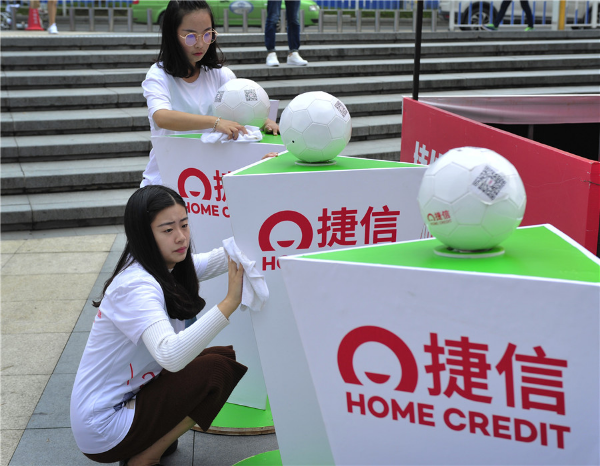Strong policies support economic resilience

A4 From our point of view, the most resilient part of the Chinese economy is its vast consumer market and the strong macro control exercised by the Chinese government.
The vast consumer market has provided China's economy with great space to play. We all know that China is the world's most populous nation, with approximately 1.4 billion people. However, what is more noteworthy is that the population of China's rural areas is 564.01 million in 2019, according to the latest data from the National Bureau of Statistics. As the small number of loans in these regions has led to imperfect credit data and limited profits, traditional bank credit businesses are unable to fully meet consumer demand. With technological assistance, Home Credit is providing practical and transparent financial products for consumer groups that lack loan channels, enabling them to obtain loan support in the absence of credit.
The strong macro control on the part of the government has also made China's economy more flexible. The hand of the State in guiding and regulating the economy has achieved remarkable results over the course of its development. This is the main reason why China was able to overcome difficulties during the Asian financial crisis of 1997 and the global financial crisis of 2008.
A5 China's economy remains resilient, with domestic demand as its key to growth. Greater attention needs to be paid to the delicate balance between economic growth and stable leverage, as an important part of risk prevention.
According to a recently released report on China's leverage rate, short-term consumer loans amounted to 9.1 trillion yuan ($1.28 trillion) as of the end of June, and are the main driving force in the rise of leverage ratio. As short-term consumer loans correspond to real household consumption, they are also playing an important role as a catalyst for China to shift from an investment-driven economic growth model to a consumption-driven one. With the introduction of relevant regulatory measures, we believe that the promotion of short-term consumer loans for consumption purposes will be revealed.
A6 This is exciting for Home Credit. China boasts a world-class business environment, and the deepened reform and opening-up of the financial industry will attract more high-quality foreign investment to China. This will lead to the establishment of more foreign funded consumer finance companies, which, together with Chinese enterprises, can provide inclusive financial services to Chinese consumers, support consumption upgrade, and inject dynamism into the China market.
These policy changes have sent a positive signal to Home Credit. A market environment always requires competition to flourish and advance. It also proves that Home Credit has the abilities to maintain a leading position, not just because it is the first foreign consumer finance company to enter the market.
A7 Benefiting from the development of financial technology in China and providing convenient, high-quality services to the market's consumers is a long-term goal of Home Credit.
To provide safe, efficient, and convenient services, it is particularly important for financial enterprises to establish a multilevel concept of financial science and technology security prevention and control. Home Credit applies a wide variety of technologies throughout its entire service process, from underwriting to post-loan services, so as to better interact with and serve consumers. Through data analysis and review, paperless loan processing, facial recognition technology, optical character recognition, mobile app services, and voice-based robot customer services, technologies have not only boosted Home Credit's operational efficiency, simplified its operational processes, and reduced operating costs, but they have also enhanced the consumer experience and created more convenient and user-friendly consumer services.
Invest in China Copyright © 2024 China Daily All rights Reserved
京ICP备13028878号-6
 京公网安备 11010502032503号
京公网安备 11010502032503号





